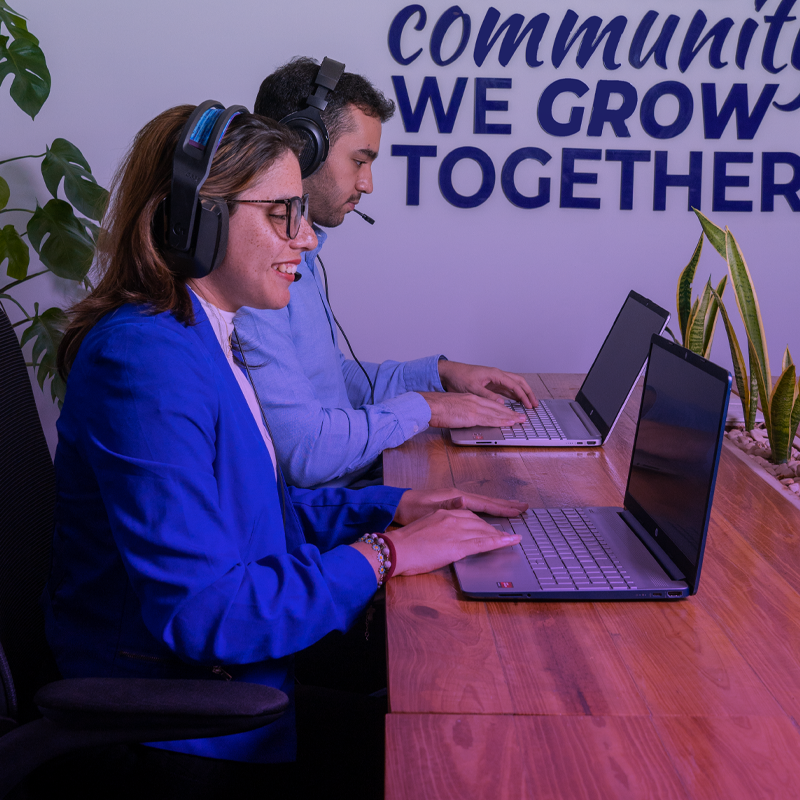When it comes to what is best in life, everyone has a valid opinion. Nonetheless, we all know some things are better than others. Some could say it is a thing of style, and to be honest, they might be right. The best in life is what matches best with your lifestyle.
For people with a chronic condition like diabetes, having a better life could be if they keep a healthy, low-sugar, and reasonably fit lifestyle. This means that although there are collective agreements on some things, at the end of the day, your way of living needs to be tailor-made.
This applies to any part of life, including work. But when it comes to working, we need to take The Company as a subject of study too.
They are most certainly a subject you always have to take into consideration. What are the company’s needs, aspirations, hopes, and dreams? What is non-negotiable? What can be tolerated? And don’t forget to evaluate what fits best with their style constantly.
Whether it is the selection of new employees, the color of the walls, the values, or the dynamics, everything must be a good match for it to work. It might not be the easiest thing to find the style of your company or to follow through when you do, but success is a reflection of that authenticity.
Sure, no one size fits all, but the things worth trying can work as tailor-made with only a few tweaks. Life has taken us to various places in the last couple of years. Some of which we never considered before. No one thought that we would be adding a mask to our daily outfits, but we adapted and learned how to style it to make the picture work more extensively.
Not only did we make the look our own, but once we got the hang of it, it started to work even better than before. That is also true with remote work; we started without a clue, driven by circumstances, and now we have better results and wouldn’t want it any other way.
We Have Come A Long Way…
There has always been a friend of a friend who worked remotely for some agency or a cousin who had a cousin who worked as a freelancer for a foreign client creating some designs. It was around, but not so massively, in our daily lives.
No one heard a kid saying they wanted to be a freelancer or a remote worker when they grew up. The possibility existed, although it never crossed our minds unless an opportunity like that presented itself.

Until the pandemic started, and the quarantine measurements required social distancing. They were forcing most companies to change their dynamics. Most traditional working environments became unsafe, and it was time to find solutions and reinvent ourselves.
The workplace suffered a change that most weren’t prepared for. We went from cubicles to living rooms at the drop of a hat. But we all try to rise to the occasion.
For companies, these unexpected changes meant a significant loss and huge uncertainty. They had to move fast and adapt even quicker. With the knowledge that their talent could be going through an ever tougher time.
Restructuring years of tradition and experience on what worked best for the company, how to proceed in certain situations, protocols with clients, and more in a few months was the challenge ahead. We all tried, looked for new pathways, and got the hang of it.
At first, not everyone had the proper conditions at home to perform their jobs. Some didn’t have a personal computer that was fitted for their tasks. Others did not count on a good internet provider to hold long video calls with their clients, and so on.
And all of this without even getting into the particular challenges that came with being at home – like dogs barking during meetings, kids asking for help in the middle of the day, and much more- cat owners were very calm with all of this, though, they just had to gently place their cats off the keyboard a few times a day.
We went from this to choosing to stay remote in most cases nowadays and creating hybrid plans when it is mandatory to be present. We developed ways to make it work for all parties involved. People found a comfortable way of living while working remotely, and companies found the quality results and connection they were looking for, even from a distance.
What Have We Learned From It?
Of course, it wasn’t as easy as we all thought. Some people said, “Sure, you’ll get more independence, you’ll be the boss of your time and your lifestyle,” and it didn’t look like it at first. But the harsh transition left us with many lessons. Every problem we faced was a new solution to come.
Even though we all struggled with finding a perfect balance that fit us right, we managed to get to a better place with all of you and create a lifestyle that works and lets us work.

One of the first issues that arose with the shift to remote work was burnout. A large amount of employees are assured of negative impacts of work-related stress. We were undoubtedly vulnerable to experiencing burnout around these uncertain times.
These changes were detrimental to the employee’s mental health and overall lifestyles. People were trying to do it all and manage it all at once while having a wave of emotions to deal with, too.
Balancing work and life became a synonym for restless nights to keep up with everything in both areas.
But, with time, this became a learning opportunity for boundaries. Setting a healthy limit between work and life was a very much-needed lesson. People learned not to bite more than they could chew and overall prioritize a sustainable relationship with work that gave them space to recharge and use their energy wisely.
The fact that you work from home doesn’t mean that you are working all the time. Delimiting those times to work and even the spaces for it was a game changer.
Another lesson that was very much related to the previous one was the acknowledgment that well-being is crucial. Encouraging a culture of wellness at the company should be a standard rather than a luxury nowadays.
This can mean encouraging your teams to take care of overall health, go on walks, do some active pauses, and maintain social interaction. Even if it is virtual, human interaction is indispensable to preserving mental health.
We learned that technology and equipment shouldn’t be underestimated. Good audio during a call with a client is an asset. A comfortable chair and a desk by our window are better than the living room’s couch. And that those noise-canceling headphones are really worth their price.
Distractions are everywhere, and we might need quiet to do our creative work, or maybe you are one of those who like having a podcast on while they work. No matter the style of work you choose to have, attention and focus need to be precise, so during this time, most found the techniques that work for them.
Why Is It Working So Well?
Companies continue to thrive while keeping remotely as much work as possible for various reasons. It wasn’t easy at first, but now it benefits everyone in many ways. There is no doubt that it is producing better results, but here are some reasons why…
Reaching Top Talent
For some companies, shifting to remote work meant getting the best talent they could find for the task, no matter where they were based. If you both speak the same language, then the working relationship could blossom.
Sometimes a task could require some specific expertise and without the correct assistance, it could not be done. And finding the right person with the necessary skills was never an easy job. Recruiters used to do miracles to find the top talent they needed in the area. Now, they have a plethora of options; they can prioritize finding the perfect fit.
Having more options is an excellent thing for a company, especially for high-demand staff. Time zone gaps can be managed, but not having the right candidate for the position is not so much. Whether you are outsourcing or hiring directly a remote employee, there is a better chance to find the right match.
This also became an opportunity for talented youth to get seen without the costs that imply moving to a big city. By enlarging the pool of talent, new opportunities arise for those skilled professionals who are at a geographical disadvantage.

Flexibility
A busy, ever-changing world creates the need to change our daily dynamics. The traditional eight hours behind a desk, a cup of coffee, and wasted time finding a parking spot are behind us.
The new workforce demands more flexibility. People are finding that being able to choose where and when to work is the future. Giving people more control over their schedule allows them to create the perfect time to do the work and perform at their best.
Parents with small children can spend more time at home with their kids and still deliver quality work on time. Young adults find it attractive that they can travel while working and much more. The flexibility that comes with remote work benefits everyone, including companies.
This doesn’t mean that there are no guidelines. Of course, there should be some order and structure, but it is not the same as it used to be. Flexibility allows us to use time effectively. There is the autonomy that comes with this, which increases morale and effectiveness and is very engaging to employees.
Adapting your work to your lifestyle as much as possible is the benefit that improves a sense of satisfaction and proves to have a positive effect on talent staying at the company.
Some people work best at night, and those atypical schedules can be considered within remote work, maybe dividing the work hours into two groups, but finding a middle ground is what it is all about.
Cost-effective
Just look at it from this angle. Your employees are performing at the top of their game, and everyone is cutting off some costs. Operational costs go down, maybe even real estate costs, if you close an office or rent some spaces only when needed.
But your employees are also cutting costs like transportation and the ones that come with the daily commute. You invest less in coffee; they spend less in going out for lunch because they have no time to meal-prep. And so on, it has economic benefits for everyone.
Increased productivity
After getting the hang of remote work, people found their perfect balance between life and work. By keeping hybrid or remote jobs, they get to adapt their work schedule to their lifestyles. People with a good balance prioritize their health and create a sustainable way of living.
This includes a sustainable way of working. These healthy employees who care to recharge will be more resilient; they might be better at solving the emerging crisis at any given time.
Working remotely reduced some stressors inherent in in-site working—having a bit more control over your time and being able to choose where to seem to increase a sense of well-being. Distractions are everywhere, but home-related distractions seem more manageable than impromptu meetings or that co-worker who came for your help to use the printer.
Remote work is helping employees design a healthier lifestyle for themselves and experience less burnout.

Is It Here To Stay?
For most people, it might. When some of the restrictions were lifted, some companies chose to stay working remotely after seeing the results. Remote work was an opportunity to find new ways of living.
To develop a new style or adapt to the one they had. After learning to thrive remotely, returning to full-time in-site work could be like moving backward.
Some found that even though their company’s way and traditions were founded on in-person work or that they missed the office, working remotely had its undeniable benefits. It also proved that not all work requires presence to be excellent and efficient.
Some other companies decided to leave some positions remotely, bring others back to the office, and make a hybrid work plan for others, too. This shows an acknowledgment of how presence, places, and in-person interactions are significant at work but that they are not indispensable all the time.
Remote work benefits everyone; it cuts operating costs for companies and gives autonomy and flexibility to employees.
Although some things need to be done on-site, there is no need to keep that meeting where most had to wait until everyone got to the room, instead it can be a zoom meeting, so we all pause our task at the given time and resume our duties once it is over.
Sure, it is not like in-site work will disappear in the twinkling of an eye, but we might still need office sites and perhaps some in-person collaborations occasionally. But is there really a need to be full-time at an office?
If there is a culture of trust, good communication, and an overall efficient team, why would you bring them back to cubicles when they seem to be doing a lot better off-site? The future already started. Technology is giving us everything we need to be accessible to work wherever we want.
There are co-working spaces for people who prefer them over their homes; there is always that creative designer doodling at the coffee shop or the writer doing research and creating at the library. To some companies, remote work seems to fit better than others, but there is no denying that hybrid and remote work dynamics are here to stay.
How To Make It Work?
Whether your company hires hybrid or fully remote workers, something could be good to take care of to ensure the success of that working relationship and the quality results we are always looking for.
We know it depends on the task they are managing and the nature of the job, but listen up; some of these things can apply to the most straightforward remote task and the big company going hybrid.
Invest in your leaders. For remote employees to thrive, you need your leaders to be clear on what they expect of their teams. Micromanaging or being too vague can result in unwanted results. Remember that many in-site leading techniques might be ineffective in hybrid or remote environments.
By being transparent, fostering assertive communication, showing empathy, and making deliberate spaces to interact, answer questions, and more, you can ensure a good relationship and good results.

Try to help them develop a more inspirational type of leadership. Everyone wants to be better and do well, but the way we are managed can impact not only the results but the relationships and satisfaction at the job.
It is not the same as on-site work, where your supervisor can walk by and shake your hand, access feedback in the moment, and create connections.
There are very different ways you can make an employee feel valued, seen, and appreciated, depending on the modality of the work. Sure, now, in a virtual environment, it is not impossible, but it needs different attention to detail.
Be available for your team, and create a space for connection so they know they can reach out to you. You can even work on informal relationships virtually, it won’t be as simple as going out for coffee after hours, some of your teammates might be halfway across the world, but finding ways to connect even outside work-related spaces can be beneficial for trust and cooperation.
Maybe a group chats to share memes and funny cat videos could work for your company, the key is to try and find what fits your style.
Although this one seems a bit more operational, it is essential to make sure your employees have all they need to perform as they are required to. For example, does your graphic designer have all the equipment they need? If not, can you provide it or help finance it? Does your virtual assistant have a good internet provider?
How can you help them find one? And so on… Asking about the operational details of remote work is essential so you know what you have to work with, and so does your employee. You might not be able to fix every issue, but asking can help set a priority to invest in infrastructure if the job demands it.
Letting them know that there could be injuries like carpal tunnel or chronic back pain can be the alert they need to make sure they make their remote work location one where it is sustainable to work. Being aware of the risks of the job, as small as they might be, is a responsible way to treat your team.
It lets them do something about it before a problem catches them off-guard.
Keep track, not tabs. You want results. You are allowing flexibility within a structure. You don’t need to go outside that agreement to get your results; both parties should hold their end of the contract, and that’s it.
To learn and find what works best in this new modality, you need to keep track of the results and ask how those conclusions came to be. But there is no need to recreate that sensation that you need to be moving the mouse or something like that.
Let time be a reflection of quality work, not a quantity requirement. Tracking results and some procedures can be used to improve protocols. No matter how the result turns out, having a record of it is a lesson. Of course, you want your teams to invest a given amount of time into the project so it can be the best version of it.
But to have that result, you need to ask for it. Be present during the process, ask how it’s going and how you can help, and that will improve performance.
No matter the style of company you want to create or the culture you want to install on it, these new modalities can wrap around it… Remote and hybrid modalities have become permanent in our modern era.
You can make them your own and adapt them to what fits best your company, but there is no way they are staying in the past with the pandemic. Some lessons came to stay, and so did this revolution of the workplace.
Years of traditional work serve their purpose, and it was time to make a change… So, what are you waiting for to make that change and let your company walk into the future?
See more articles by Laura Navarro.





